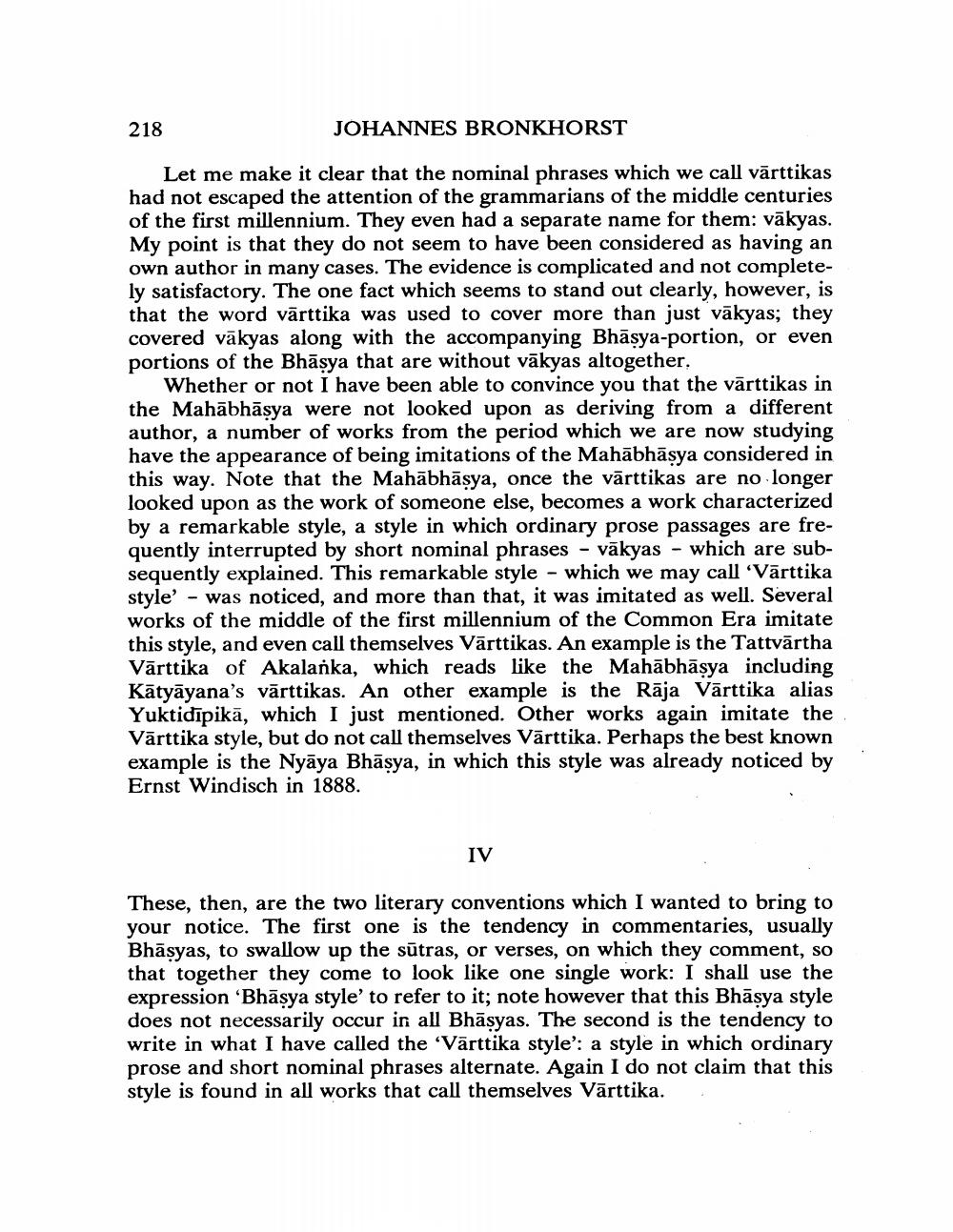Book Title: Two Literary Conventions Of Classical India Author(s): Johannes Bronkhorst Publisher: Johannes Bronkhorst View full book textPage 9
________________ JOHANNES BRONKHORST Let me make it clear that the nominal phrases which we call värttikas had not escaped the attention of the grammarians of the middle centuries of the first millennium. They even had a separate name for them: vākyas. My point is that they do not seem to have been considered as having an own author in many cases. The evidence is complicated and not completely satisfactory. The one fact which seems to stand out clearly, however, is that the word värttika was used to cover more than just väkyas; they covered väkyas along with the accompanying Bhāṣya-portion, or even portions of the Bhāṣya that are without väkyas altogether, Whether or not I have been able to convince you that the värttikas in the Mahabhāṣya were not looked upon as deriving from a different author, a number of works from the period which we are now studying have the appearance of being imitations of the Mahābhāṣya considered in this way. Note that the Mahäbhäṣya, once the vārttikas are no longer looked upon as the work of someone else, becomes a work characterized by a remarkable style, a style in which ordinary prose passages are frequently interrupted by short nominal phrases vākyas which are subsequently explained. This remarkable style - which we may call 'Varttika style' - was noticed, and more than that, it was imitated as well. Several works of the middle of the first millennium of the Common Era imitate this style, and even call themselves Vārttikas. An example is the Tattvärtha Värttika of Akalanka, which reads like the Mahābhāṣya including Katyāyana's värttikas. An other example is the Raja Värttika alias Yuktidipika, which I just mentioned. Other works again imitate the Värttika style, but do not call themselves Värttika. Perhaps the best known example is the Nyaya Bhāṣya, in which this style was already noticed by Ernst Windisch in 1888. 218 IV These, then, are the two literary conventions which I wanted to bring to your notice. The first one is the tendency in commentaries, usually Bhāṣyas, to swallow up the sutras, or verses, on which they comment, so that together they come to look like one single work: I shall use the expression 'Bhāṣya style' to refer to it; note however that this Bhāṣya style does not necessarily occur in all Bhāṣyas. The second is the tendency to write in what I have called the 'Värttika style': a style in which ordinary prose and short nominal phrases alternate. Again I do not claim that this style is found in all works that call themselves Värttika.Page Navigation
1 ... 7 8 9 10 11 12 13 14 15 16 17 18
